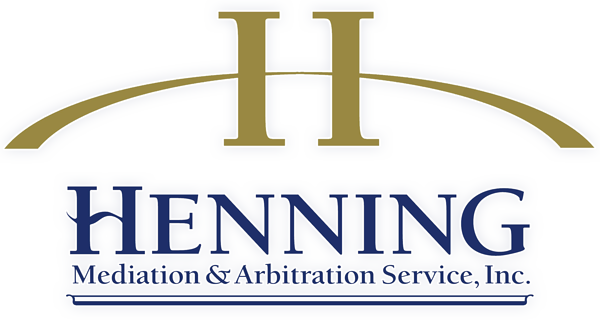Today, crowded civil dockets often require your clients to wait their turn, sometimes for years, while the financial and emotional costs of litigation spiral out of control. Mediation has become an essential alternative to a clogged judicial system, making effective mediation strategies an important skill set for every successful litigator.
I have represented hundreds of plaintiffs and defendants at mediation and served as a mediator for more than 10 years. I have found that, when direct negotiations fail, mediation gives the parties a way to restart negotiations through the buffer of an empathetic neutral who serves as the emissary to get the parties talking again. The skilled mediator can find just the right pace and cadence for the caucuses to build momentum toward closure by making sure both sides’ positions are positively impacting the negotiations. You can settle your case in a day with zero risk of an adverse outcome since resolution requires the mutual assent of all parties. That is why more and more courts are making mediation mandatory with amazing results. Its popularity continues to grow because it offers litigants the
opportunity to collaborate on crafting a settlement that meets both parties’ needs within the confines of a confidential process.
Mediation works in mysterious ways by tapping into that comfort zone in a litigant’s DNA, halfway between the ancient “fight or flight” instinct that worked for cavemen but spells disaster as a modern means of solving legal disputes. We have evolved into emotional centrists who seek pragmatic private solutions to our problems by talking rather than fighting. Mediation allows the plaintiff to avoid the stress that comes from believing there is no option but to either “fight,” by pursuing a lawsuit and taking on the risk of an unknown outcome at some uncertain time far in the future, or take “flight” by accepting a low-ball nuisance value offer. Given those equally unattractive choices, mediation is the quintessential no-brainer due to the insignificant resource allocation required to participate in a one day meeting that offers a high likelihood of success.
Here are 10 steps you can take to maximize your client’s chances for a successful mediation.
- Focus on the Future: Mediation vs. Remediation
Mediation focuses on finding a resolution the parties believe is in their future best interests. In stark contrast, litigation focuses only on the past, with the parties pouring resources into a highly structured fault-finding process to determine whether a cognizable legal wrong occurred and, if so, the scope of remediation allowed by law. Like the movie “Groundhog Day,” the litigants spend years trying to prove their version of past events, oblivious to the natural prejudices that will inevitably color their respective recollections. At trial, they make very different presentations to strangers who decide the case by largely picking the play they like the best. It is an “all or nothing” shot at remediation, even though the jury likely found ample portions of truth in both sides’ positions. Such are the limitations of litigation.
By prioritizing the future, mediation lets the parties skip the angst-producing process of deciding fault and go to work collaborating on building the proverbial bridge to tomorrow by agreeing to a compromise that prioritizes time, our most valuable and ephemeral asset, and regain control of their lives and businesses by letting go of the need to win. They walk over that bridge they built together, full of hope for the future. There is no more satisfying moment for a neutral than when the parties come together at the end of a long day that ended in settlement and congratulatory handshakes, hugs and smiles exchanged between parties who could barely stand to be in the same room when the mediation began. Such is the power of mediation. - Mediate Early
Early mediation gives the parties an excellent chance at settlement before meaningful resources have been devoted to litigation and positions harden. Plaintiffs who decline an early invitation to mediate are usually still in the grip of intense emotions borne of a wrong they blame on the defendant. They can’t see past an outcome that punishes the defendant and express their anger by making an exorbitant settlement demand that causes the defendant to conclude that settlement is impossible.
Defendants who balk at early mediation fear any meaningful offer they make will be seen as an admission of wrongdoing and empower a greedy plaintiff to ask for more. Others bypass a chance at early resolution because they believe litigation, at least through discovery, will exhaust an angry plaintiff and force them to settle on their terms. But that approach often ends up costing defendants more in the long run when substantial litigation costs are combined with the final settlement. Never underestimate a mediator’s ability to get the parties talking settlement
once everyone is in the same room. Like laughing and crying, there is a very thin line between the fight and flight elements of our most primordial instinct. Once a plaintiff has a forum in which to vent, to tell their story to a neutral committed to solving the problem, they often break free of the emotional barriers that were holding the settlement hostage and are anxious for resolution. It happens every day. - Pick the Right Mediator
The parties are usually best served by hiring an experienced mediator whose expertise in the substantive area relevant to the claims at issue is respected by counsel. Use the selection process as a first step toward resolution by working collaboratively with opposing counsel. Don’t reject a potential mediator just because they were suggested by opposing counsel. Acceptance of a mediator your opponent recommends usually makes settlement more likely. The suspicion that they will “favor” their side is not realistic. Neutrals seldom know who initially suggested them, nor
do they care since settlement depends on meeting the expectations of all participants. - Be Well Prepared and “Clear the Air”
Know your case inside and out and be well-versed in the mediation techniques that maximize your client’s chances for a positive outcome. Have all the critical facts and figures at your fingertips. If you are unsure about your first move, talk to your mediator. It is never too early to begin to strategize on how best to get to “yes.”
The tone at mediation should be one of conciliation and collegiality rather than confrontation and combat. If tempers have flared during the litigation, meet with your opposing counsel and “clear the air.” The clients will bring more than enough emotion to the mediation without the lawyers adding friction. - Make a Reasonable Pre-Mediation Settlement Proposal
Jumpstart the negotiations by exchanging realistic pre-mediation settlement proposals. If the plaintiff is claiming economic damages like back pay, medical bills, and attorney fees, calculate the precise amounts and have the supporting documentation available for review. Never condition mediation on the opposing party making some specific qualifying offer as a quid pro quo for agreeing to mediate. You are just short-circuiting the mediation and denying your client a good chance at closure. - Educate Your Client
The more your client knows about the mediation process, the better they will react to the highs and lows of the session. Explain how the venue for dispute resolution is changing from an adversarial judicial process to one where the goal is to find closure through compromise. Prepare your client for the likelihood of unrealistically low and high proposals at the outset and have a candid conversation about what a realistic settlement might look like. Make sure your client is not surprised to learn at the mediation that you don’t think their case is a “slam dunk.” - Submit a Mediation Statement and Follow Up
Well-written mediation statements improve your settlement chances by making the mediator more effective. Start off by introducing your client with a brief resume of personal and professional achievements and other relevant background information. Next, summarize the factual and legal disputes that led to litigation, chronicle prior settlement negotiations, and provide a range of possible outcomes your client could accept. Focus on the barriers that have frustrated settlement to date, including the emotional hot spots that need to be addressed before a realistic settlement can be forged. Finally, acknowledge your weak points rather than allowing your opponent to point them
out over the course of the mediation, and temper the advocacy, as your purpose is to educate rather than persuade.
Schedule a pre-mediation phone conference with the mediator to discuss any headwinds impacting your client’s receptivity to settlement and how the mediator can help manage your client’s expectations and keep emotions in check. Also, consider whether your mediation statement needs to remain confidential. Exchanging statements, at least those portions regarding the merits of the claims, can help both parties better value the case. - Forego the Opening Statement
Begin with an opening meeting, but pass on making a substantive opening statement, as they tend to be adversarial and get the mediation off to a bad start. The one exception is when the defendant’s decision-maker is actively participating in the mediation and wants to hear the plaintiffs present their case to get educated about the claims. In that situation, it is critical that the plaintiff’s counsel deliver an opening statement that does not morph into a closing argument.
Plaintiffs benefit from a sincere presentation that extols the benefits of closure for both parties. Likewise, the defendant’s counsel can get things off to a powerful start by thanking the plaintiff for attending, sounding hopeful about the success of the mediation, and expressing some sympathy for the plaintiff. With just a few well-placed words, defense counsel can deny liability but defuse the plaintiff’s demonization of the defendant and lower the emotional temperature of the proceedings. - Don’t Set a Predetermined ‘Bottom Line’ and Explain Offers
Do not tie your client to a pre-mediation “bottom line” settlement number as it will become an anchor that could drag the mediation into an impasse. Negotiate with an open mind about settlement within a broad range of reasonable outcomes. Similarly, arbitrary “authority” limits set by absent adjusters can cause an impasse before the defendant has gotten the very best offer out of the plaintiff, which should be the primary objective of every defendant.
Mediations can break down when the caucuses morph into an auction and offers to devolve into numbers divorced from any rationale. Legitimize your proposals by noting the specific basis for each term. Avoid the tactic of “mirror” offers. Mirroring happens when plaintiffs “pad” their pre-meditation demand so they can repetitively match the defendant’s moves and still get to their desired result. This transparent negotiation tactic is unhinged from any analysis of the case and creates extreme negativity in the defendant’s room that can be avoided by using more creative negotiation tactics. - Avoid Impasse with Brackets, Non-Monetary Benefits or a Mediator’s Proposal
The brinksmanship that is often prevalent in direct negotiations has no place in mediation. Ultimatums are toxic to settlement. If you are so far apart that both sides start losing hope, use brackets to narrow a big gap between the parties’ positions instead of making a “best and final” offer. Brackets are a way for a party to offer substantial movement in exchange for some corresponding concession by the other side. Listen to your mediator in fashioning your brackets. They have been in the other room and know best what numbers will resonate.
The key to a successful mediation turns on the assumption that both sides are seeking a solution that the other side can accept. If one side exhausts their ability to make further monetary moves, take advantage of the fact you can fashion relief in a mediation that would not be available in court by considering nonmonetary benefits. For example, in employment cases, the parties can agree to a number of nonmonetary terms as a way to bridge a monetary impasse, such as converting a termination into a resignation, a reference letter from the employer, or a waiver of a non-competition agreement.
If negotiations still stall, use your mediator as a resource for alternative strategies. Trust their judgment about how to keep the parties talking by making a well-timed concession or changing negotiation tactics. If an impasse is imminent, consider adjourning to reconsider your respective positions with the mediator, continuing the caucus process by telephone, or soliciting a mediator’s proposal. This face-saving strategy is often successful because the settlement terms are recommended by the mediator. If both sides accept the proposal, always enter into an enforceable settlement memorandum setting forth all material terms as a precursor to a final settlement agreement. In drafting the memo, consider how to add value by structuring the settlement in ways that minimize income and payroll taxes.
Mediation provides a non-adversarial forum where the neutral can absorb the parties’ emotional reactions to the claims at issue and channel that negative but very powerful energy into motivation to focus on the future rather than obsess over the past. Once the mindset moves from past to future, emotions abate, and the parties stop talking past each other and truly listen to the “other side” of the case. It is on the broad plane of understanding the opposing viewpoint that the parties will find that island of common ground upon which a fair compromise can take root and
grow.







